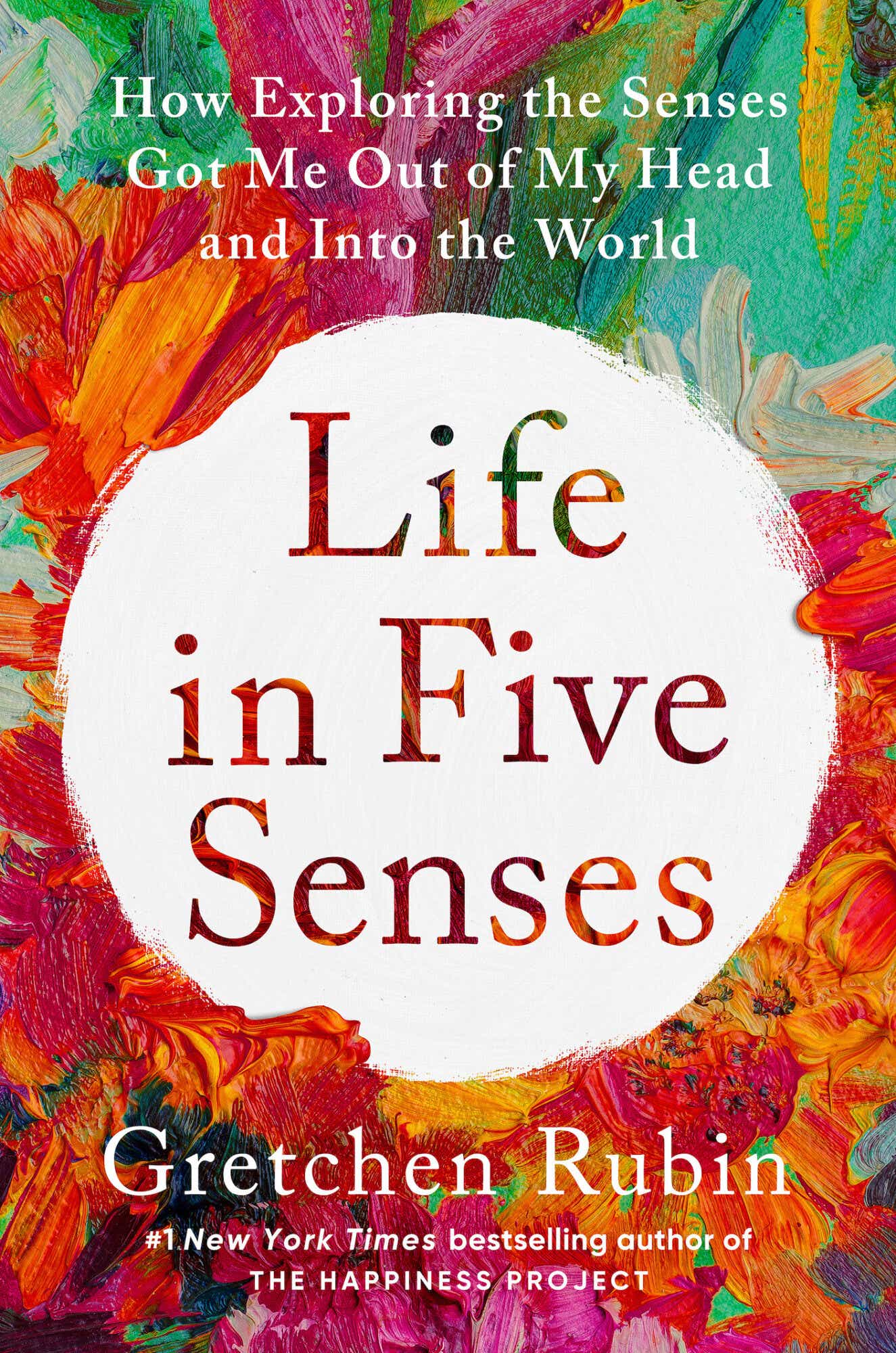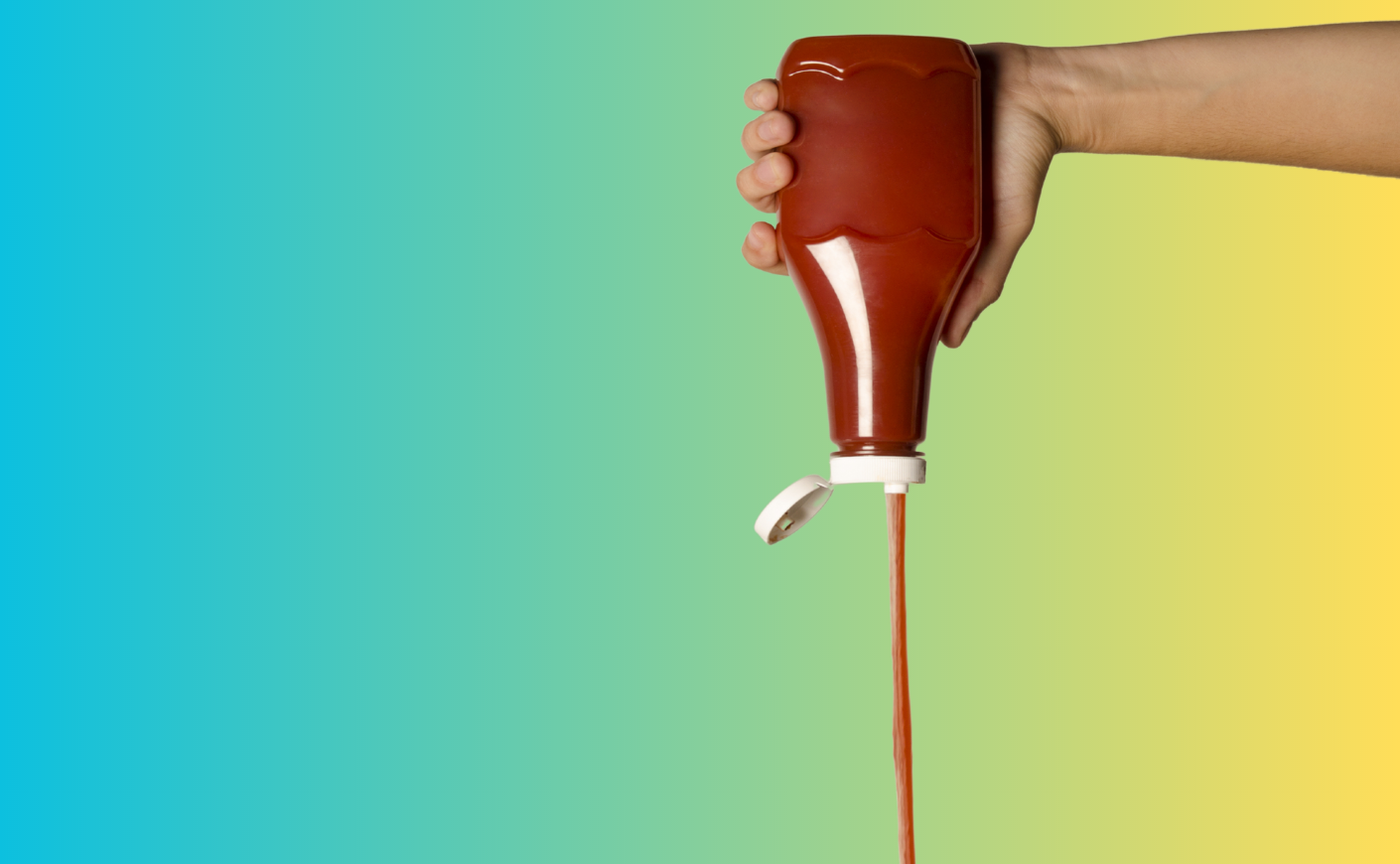Gretchen Rubin has spent years meditating on the experience of happiness, calm, and all the other feelings that make us tick. It was only after a recent visit to the doctor's office, however, that she realized she'd been neglecting a huge facet of everyday experience: Our senses.
When her newfound motivation led her to rediscover the intricacies of smell and taste, Rubin began to examine the power of two foods so accessible that we take them for granted. In this excerpt from her new book Life In Five Senses: How Exploring the Senses Got Me Out of My Head and Into the
World, she explains how ketchup and vanilla taught her that simplicity doesn't have to be dull.
As demonstrated by the fact that my favorite restaurant was a diner, I didn’t have a very adventurous palate, but I realized that there was another way to find more joy in taste: I could cultivate more appreciation for the familiar tastes of my own kitchen. Just as I’d done with my sense of sight, I could look for what I’d overlooked. I decided to explore two familiar yet magnificent flavors, both so common and so cheap that they’re discounted, and even disparaged, despite being wildly popular.
Those two flavors? Ketchup and vanilla.

First, tomato ketchup. People love the tomato, which is one of the most widely consumed foods in the world; wherever it has been introduced, people have added it to their cuisine. In the United States, the tomato is second only to the potato as a popular vegetable. (Despite the old trick question, the tomato can qualify as both a fruit and a vegetable, and the U.S. Department of Agriculture categorizes it as a vegetable.)
Scarlet, viscous, and delicious, ketchup is one of the most popular ways to consume tomatoes. Ketchup started in China, hundreds of years ago, as a fermented fish sauce called ke-tsiap, which eventually made its way around the globe to the United States, where tomatoes became an essential part of the recipe. Nowadays, about 650 million bottles are sold each year, and about 97 percent of Americans have a bottle in the refrigerator.
We don’t give ketchup much thought, and many people even dismiss it as the condiment that undiscriminating eaters use to overpower the flavor of anything it touches. The flavor of ketchup, however, is exceptionally complex. Heinz ketchup is the rare food that has the magical ability to hit each of the five basic tastes: sweet, sour, bitter, salty, and umami. That span may explain why ketchup is well-loved both as itself and also as the secret ingredient in many popular foods, such as chili, meatloaf, and stir-fries, and in many sauces and dressings, such as Bolognese sauce, barbecue sauce, sweet-and-sour sauce, Russian dressing, and Thousand Island dressing.
Still, ketchup retains its stigma. At a business lunch, a colleague mentioned that she was going to a Thai restaurant for dinner, and I told her, “Guess what I just learned! A main ingredient in American Pad Thai is ketchup. Pad Thai is basically ‘noodles with ketchup.’”
She wasn’t happy to hear it.
I thought I knew the taste of ketchup well, but after learning more about it, I decided to give it more attention. I pulled the bottle of Heinz ketchup from the refrigerator door, squirted a dollop onto a spoon, and put a little on my tongue. The ketchup did indeed hit all five tastes, and its aftertaste was just as good as the immediate explosion of flavor. Plus I admired ketchup’s rich, shiny red color and its thick, flowing texture.
I tried to think of other five-taste wonders. My best answer was the margarita cocktail, with its combination of the salt on the rim of the glass, the sweetness of the agave syrup or orange liqueur, the sourness of the limes, and the bitterness of the tequila. No umami, though.
Online, I asked people for suggestions of more four- or five-taste foods, and they suggested many:
• Apple pie with cheddar cheese
• Sweet-and-sour pork
• Pho, depending on what you put in it
• Crackers with honey and a sharp cheese
• Thai red curry
• Worcestershire sauce
• Tamarind fruit
• Kithara
I realized that we had one of these items in our cabinet. I poured a few drops of brown Worcestershire sauce into a spoon and gave a taste; sure enough, I could pick up sour, sweet, salty, and umami, though I wasn’t sure about bitter.
Discovering the magic of ketchup (and Worcestershire sauce) made me eager to turn to my next taste subject. Vanilla — or, more precisely, vanilla extract — is something we keep in our kitchen at all times, and I use it just about every day.
I’ve always loved vanilla. Ironically, although the term vanilla is sometimes used to describe something bland and boring, vanilla is one of the most powerful flavors in the world.
We tend to think of it as the flavor in desserts like crème brûlée, tapioca pudding, vanilla ice cream, or vanilla wafers, but it’s also often a component of flavors like chocolate, caramel, and coconut, because it balances sweetness, masks bitterness, adds creaminess, and makes everything taste better. In the West, our association of sweetness with vanilla is so strong that we can make something taste sweeter just by adding vanilla—even though vanilla itself is not, in fact, sweet. In East Asia, where vanilla is associated with savory foods, eaters don’t experience this sweetening effect.
Learning about vanilla made me realize that although I love vanilla-flavored anything, I couldn’t remember ever tasting vanilla itself. I headed to the kitchen, pulled out our bottle, and cautiously dabbed a drop onto my tongue. The scent drifting from the bottle was delightful; the drop on my tongue tasted of alcohol (alcohol carries the vanilla flavor), with a bitter kick that left a burn. And, it turns out, there was a reason that I didn’t taste much: Vanilla has no taste at all. When we add a teaspoon of vanilla to a recipe, we’re adding a pleasant smell, not a taste.
Surprisingly, I learned, we can enjoy a lot of vanilla. Most flavors taste good at a certain level but taste bad when more is added; vanilla keeps tasting good even at high levels. To test this feature of vanilla myself, the next time I spooned Greek yogurt into a bowl, instead of adding the usual three thin brown drops of vanilla, I poured in an overflowing tablespoon. I gingerly gave the yogurt a taste. Still good.
(However, if I added a cup, I suspect that would be too much vanilla.)
Starting in the 1990s, vanilla even became a dominant ingredient in many perfumes, such as the blockbuster perfume Angel; one of my favorite perfumes is Tom Ford’s Tobacco Vanille. In my fragrance class, I’d loved the smell of vanillin (think vanilla milkshake). While few scents and flavors are loved everywhere, admiration for vanilla seems to be fairly universal, maybe because breast milk has a suggestion of vanilla.
When I stopped to notice, the flavors of ketchup and vanilla became far more intense and enjoyable. I found my taste adventures without leaving my own kitchen.
Excerpted from LIFE IN FIVE SENSES by Gretchen Rubin. Copyright © 2023 by Gretchen Rubin. All rights reserved. No part of this excerpt may be reproduced or reprinted without permission in writing from the publisher.









